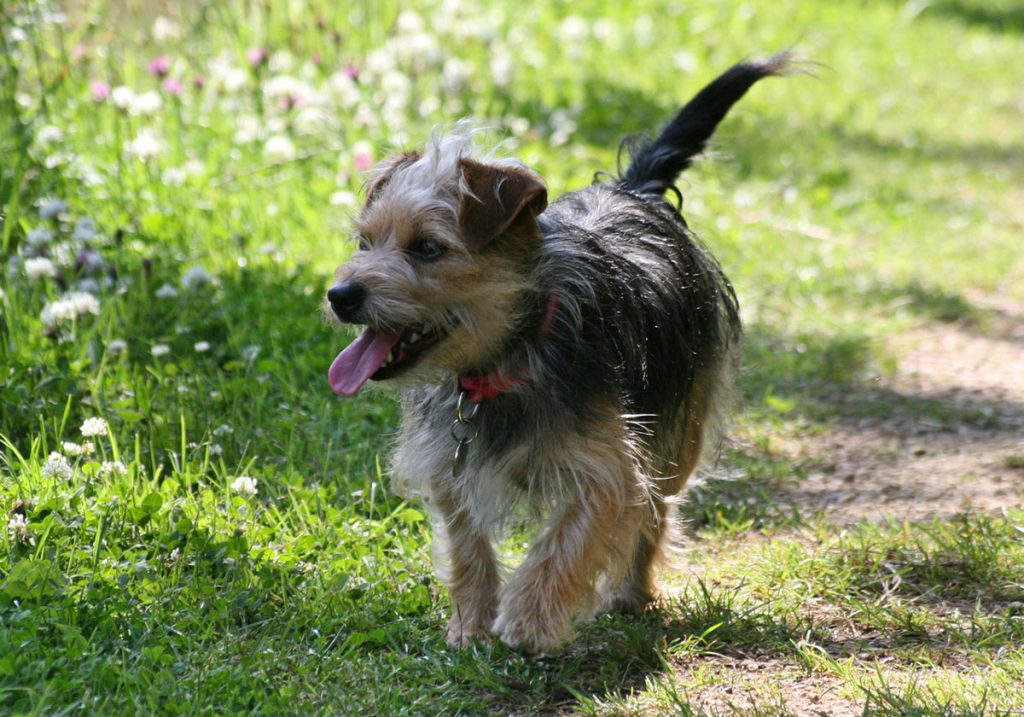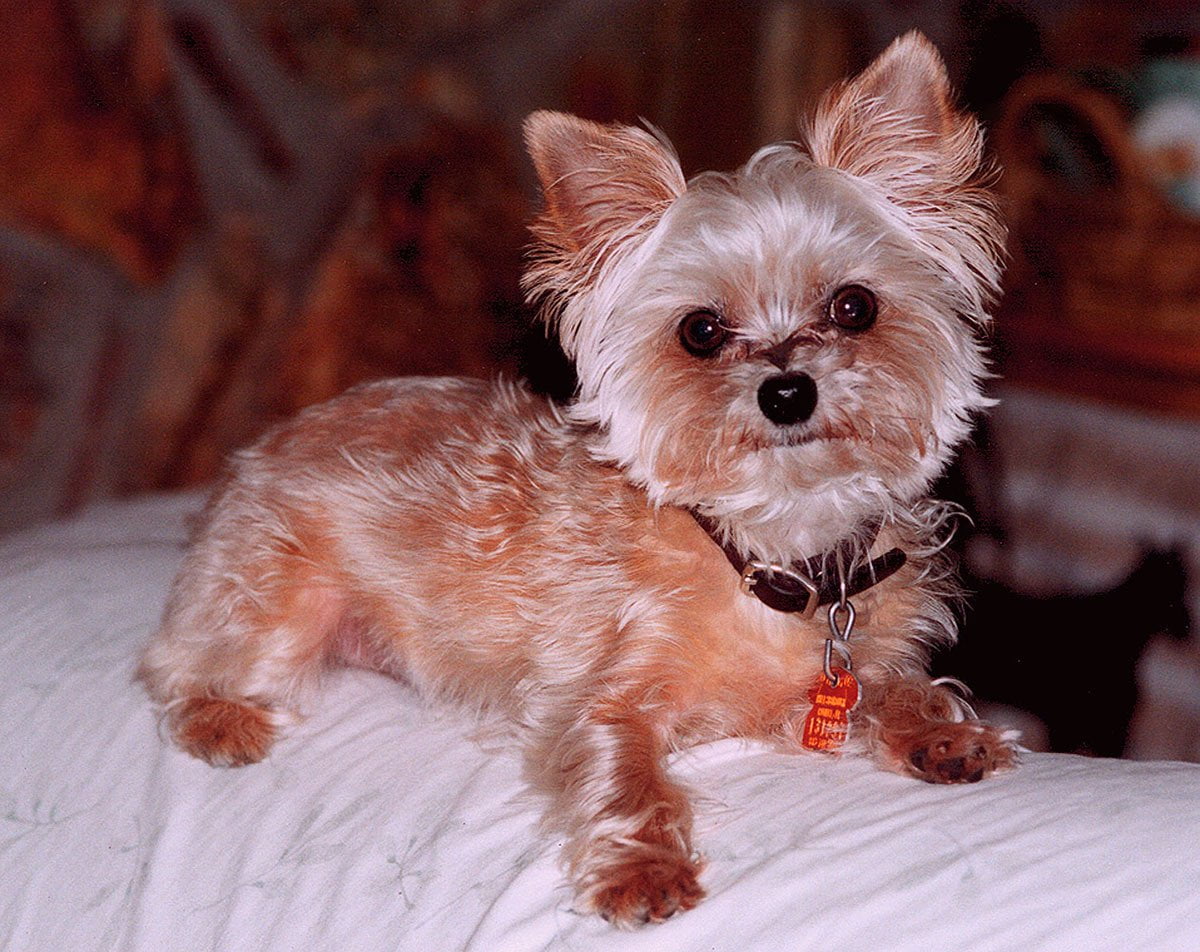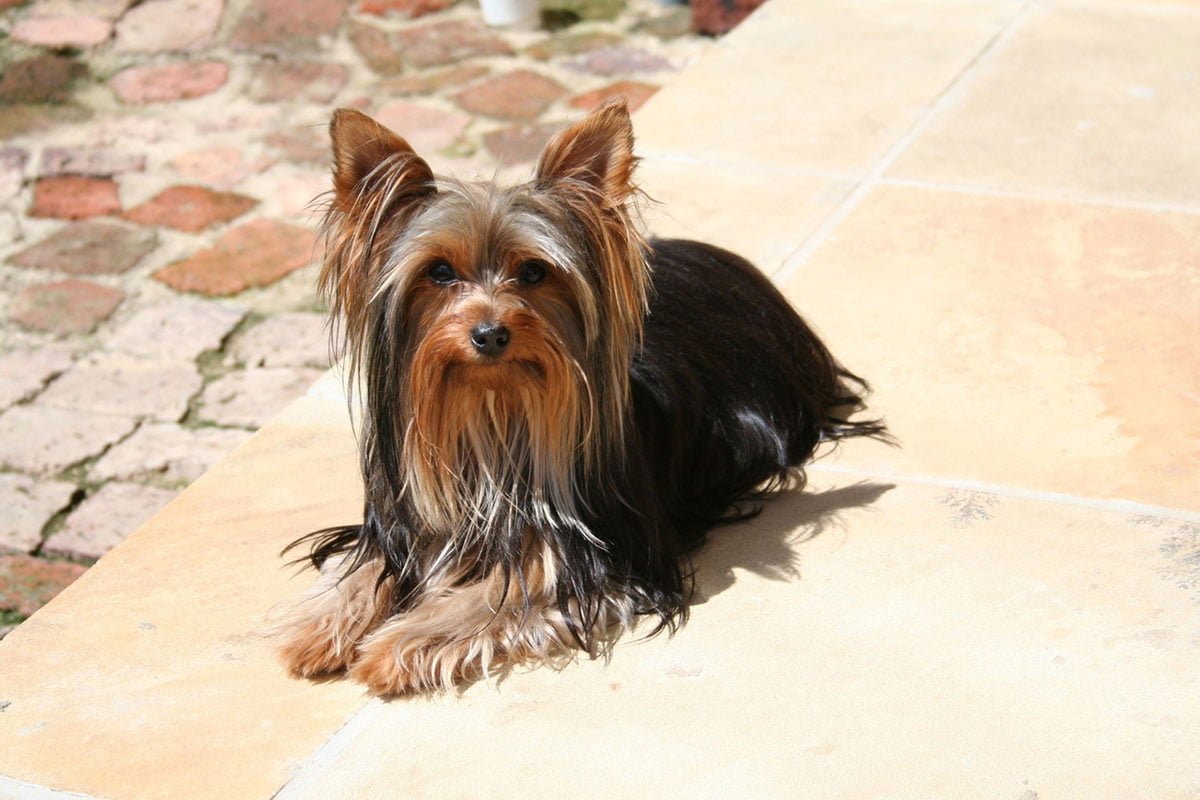
- Home
- Stud Dogs
Some of our most popular Stud Dog Breeds:
- Puppy Litters
- Dog Services
- Dog Breed Profiles
- Blog
- Contact Us
Yorkshire Terrier Breed Profile

The Yorkshire Terrier is one of the smallest breeds of dog. Some of the very tiniest of this breed are known as Teacup Yorkshire Terriers, however this is not an official variant and has no distinction as a separate breed.
Having a reputation as an affectionate companion or lap dog, the Yorkie (as it is nicknamed) enjoys the company of other people, feeling anxiety when left alone for long periods of time. Their long hair is hypoallergenic, and lends itself well to decorative styles. This clever little breed is a popular pet with a lively personality and a strong loyalty to its home and owner.
Typical Yorkshire Terrier Facts
Height: 9 to 11 inches (22 to 28 cm)
Weight: Under 7 pounds (under 3 kg)
Average Litter Size: One to five
Life Expectancy: 12 to 15 years
Good with Children: Yes, if careful
Kennel Club Classification: Toy

Colour of a Yorkshire Terrier
Yorkshire Terrier puppies are black and tan, but this lightens and changes to blue and gold when the dog is fully grown. Some Yorkshire Terriers have more unusual colourings such as only maintaining one solid colour, but this is unofficial and is considered to be a defect. Yorkshire Terriers with some white colouration to the coat are known as Biewer Terriers.
Grooming a Yorkshire Terrier
The fur of a Yorkshire Terrier is unusual as it is similar to human hair, and can be treated in a similar manner. Many owners of this breed choose to place a bow at the top of the dog’s head in a top knot, keeping the hair away from the eyes.
A Yorkshire Terrier’s fur grows very long. For show dogs, the long length is often preferred, but for pet dogs it may be more practical to opt for a shorter trim. Regular bathing and brushing will keep the dog’s coat in top condition. Pay attention to the eyes, teeth and ears, and ensure they are kept clean to avoid infections.
Yorkshire Terrier Common Ailments/Health Issues
There are a few health conditions to keep an eye out for in Yorkshire Terriers. If the dog is vomiting, it could be a sign of pancreatitis or hemorrhagic gastroenteritis and will require medical attention. Allergies and hypoglycaemia can trouble Yorkshire Terriers but symptoms can be lessened by avoiding triggers, and with dietary changes respectively. Be sure to enquire about the medical history of your Yorkshire Terrier puppy’s parents, so that you can reduce the risk of your dog inheriting genetic conditions such as Legg-Perthes disease, liver shunt, kneecap dislocation, collapsed trachea, bladder stones, or retinal dysplasia.

Temperament of the Yorkshire Terrier
This feisty little dog packs a big personality. The Yorkshire Terrier loves being the centre of attention, but due to their small size and delicate frame, it’s important that they’re treated with care, as they may become defensive if handled clumsily. Brave and playful, their curious nature means they’re always ready for an adventure.
Training a Yorkshire Terrier
Yorkshire Terriers can be stubborn when it comes to being house trained, but they are intelligent dogs and will learn to relieve themselves outside if their owner is consistent. It’s important for this breed of dog to respect his or her owner, and firm boundaries will let the dog know who is in charge. When it comes to rewarding good behaviour, praise and positive reaffirmation will go a long way.
Yorkshire Terriers make great guard dogs as they have a tendency to bark at strangers, but they can be trained to curb this noisy behaviour. They are considered to be one of the most highly trainable breeds, so obedience training is usually straightforward.

Exercise for a Yorkshire Terrier
The Yorkshire Terrier is an agile and energetic breed, requiring daily (or twice daily) 20- to 30-minute walks to keep happy and healthy. Being a small dog with short legs, they may struggle to keep up on brisk walks, so owners should ensure that they adjust their speed to match the steady pace of their dog. Lively play sessions will suit this athletic breed, and they love to chase after balls and spend some quality time off the lead.
History of the Yorkshire Terrier
As one might guess from the name, the Yorkshire Terrier originated in Yorkshire, historically England’s largest county. The breed is a relatively young one in comparison with some others, having been formed in the last 1800s. The breed was developed for practical purposes, by blending several different breeds of dog together.
The reason for the creation of the Yorkshire Terrier was to assist the miners and mill workers of the 19th Century. Many workers had relocated from Scotland to Yorkshire in search of work in the mines and cotton mills of England, bringing with them a mélange of small terriers of varying breeds, known as Scotch Terriers, literally translated as dogs from Scotland. It’s thought likely that none of these existing terriers were as efficient at catching rats as the workers would have liked, so a new breed of dog was developed for the primary purpose of ratting.
No written documentation has been found detailing which specific breeds of terrier were crossbred to form the Yorkshire Terrier, but the assumption is that the Paisley Terrier, the Skye Terrier, and the Clydesdale Terrier were likely to have played a main part in the creation of the new breed, as the Yorkie bears many similarities and resemblances to all three. It’s possible other breeds such as the Maltese may have also been bred into the Yorkshire Terrier at some point, but this is speculation.
Yorkshire Terriers proved themselves adept at their given role of ratting, and were equally as skilled at catching other small mammals. Their cute and small appearance, however, meant that during the Victorian era Yorkies began to be used as lap dogs, turning their role from hunter to companion.
The father of Yorkshire Terriers was a stud show dog named Huddersfield Ben, who sired many puppies and defined the breed’s standard.

Famous Yorkshire Terriers
The original illustrations in the novel The Wizard of Oz depicted the main character’s dog, Toto, as a Yorkshire Terrier.
Yorkshire Terrier Stud Listings
A dog owner since the early 80s, after convincing his parents to buy a Yorkshire terrier named Sadie, Darren created Dream Dogs so dog owners could find the best dog related information on the Internet.